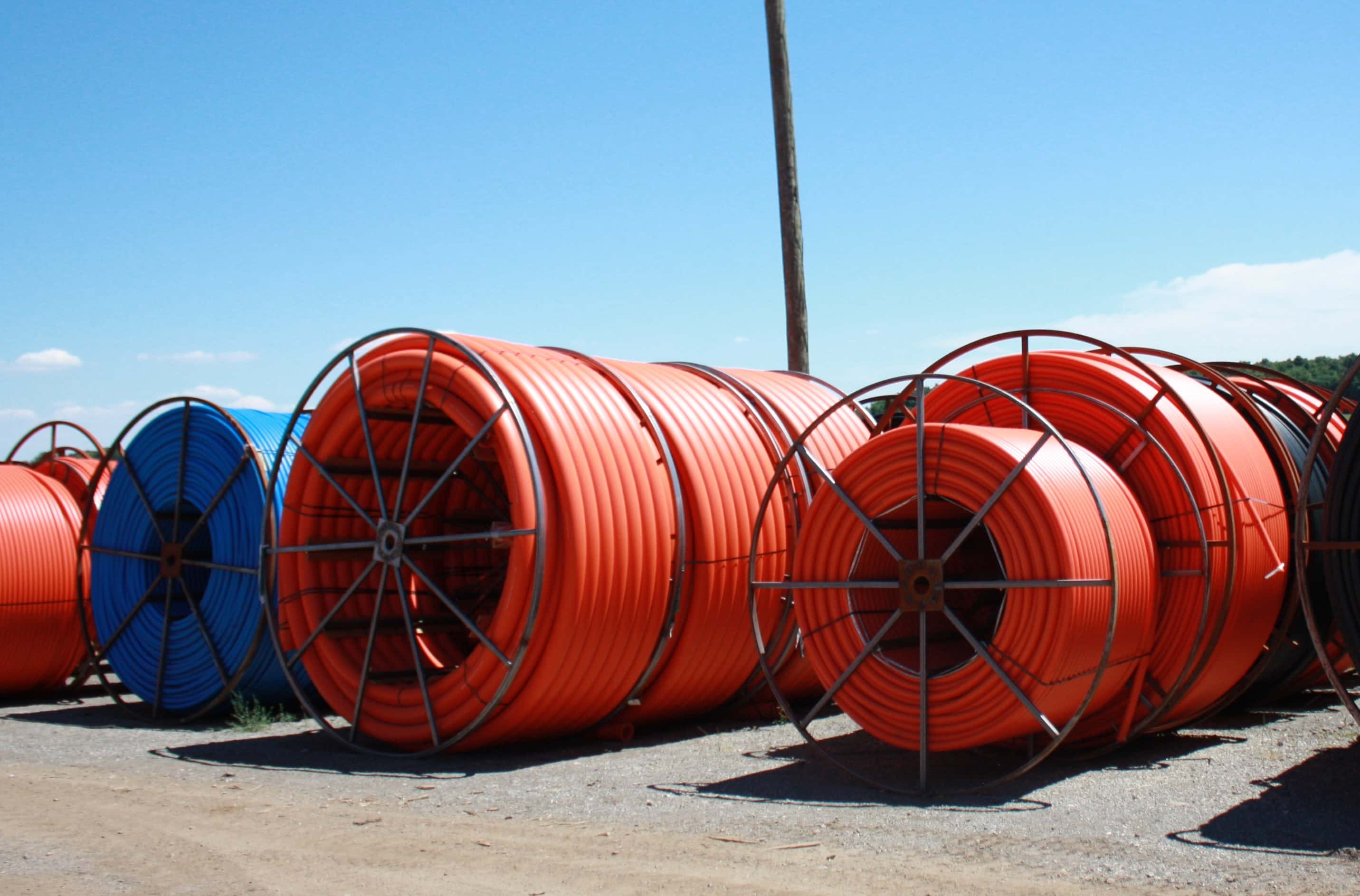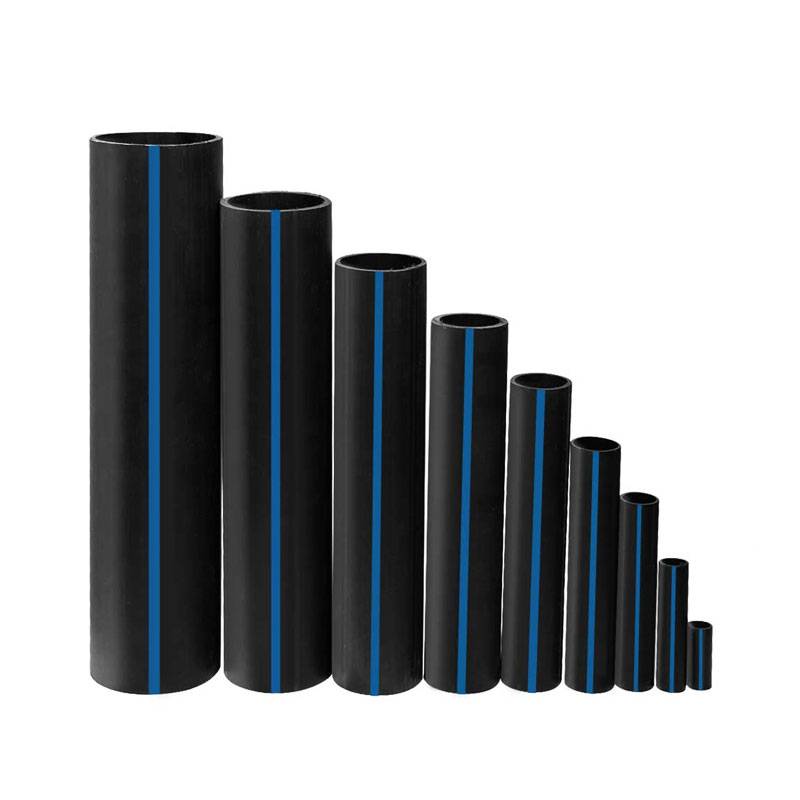The Reliability of Choosing Pipe Supplier American Plastics Midland
Wiki Article
Check Out the Manufacturing Refine Behind High-Quality HDPE Pipeline and Its Applications
The manufacturing process of premium HDPE pipelines is elaborate and systematic. It begins with the option of basic materials that enhance performance. Following this, ethylene undergoes polymerization to create material, which is after that formed through extrusion. Quality control is extremely important, making certain that the end product meets rigid criteria. The journey of HDPE pipelines does not finish with production. Their applications across different industries reveal a broader relevance worth taking a look at.Recognizing HDPE: Residences and Advantages

High-density polyethylene (HDPE) is a versatile thermoplastic understood for its resilience and resistance to numerous environmental aspects. This product displays excellent tensile stamina, making it ideal for demanding applications. Its low-density framework contributes to a light-weight product, helping with simplicity of managing and installment. HDPE also showcases amazing resistance to chemicals, which minimizes deterioration when exposed to extreme substances.
The product's reduced wetness absorption even more enhances its durability, making it suitable for use in pipes and tank. Additionally, HDPE is resistant to ultraviolet (UV) radiation, ensuring that items keep their honesty even when revealed to sunlight. Its versatility allows for the development of elaborate shapes without compromising toughness. The eco-friendly nature of HDPE, often stemmed from recycled products, includes in its appeal, promoting sustainable techniques in manufacturing. Generally, these residential properties and advantages make HDPE a preferred selection for numerous commercial and consumer applications.
Basic Material Choice for HDPE Manufacturing
The selection of basic materials for HDPE production is important to verify the final item satisfies the wanted requirements and top quality standards. High-density polyethylene (HDPE) is largely generated from polymerized ethylene, stemmed from fossil gas such as gas or petroleum. The quality of these feedstocks considerably influences the mechanical and thermal residential or commercial properties of the last HDPE.Ingredients additionally play a considerable role in boosting HDPE's efficiency, including anti-oxidants, UV stabilizers, and colorants, which enhance toughness and resistance to ecological variables. The choice process need to think about not just the chemical structure of the raw materials but additionally their processing features to assure efficient manufacturing.
Furthermore, the sourcing of resources should prioritize sustainability and conformity with environmental regulations, as responsible methods are critical in today's market. Inevitably, cautious raw material choice lays the structure for creating premium HDPE pipelines suitable for varied applications.
The Extrusion Refine: Shaping HDPE Pipe
The extrusion procedure plays a vital role in shaping HDPE pipes, starting with careful material prep work techniques that ensure optimal flow and uniformity. Just as crucial is the layout of the die, which directly affects the last measurements and surface area top quality of the pipeline. With each other, these factors add greatly to the effectiveness and top quality of HDPE pipe production.Product Prep Work Strategies
Effective production of HDPE pipelines begins with precise product preparation techniques, especially the extrusion procedure. During this stage, high-density polyethylene material is first dried out to get rid of wetness, guaranteeing ideal circulation characteristics. The resin is after that fed right into the extruder, where it undergoes heating and melting, transforming into a viscous state. This home heating process is very carefully controlled to keep the material's stability and efficiency. The molten HDPE is compelled with a die, forming it into a constant pipeline kind. Proper temperature level monitoring throughout extrusion is important, as it directly influences the product's buildings and the end product high quality. As soon as shaped, the HDPE pipeline is cooled and cut to specified sizes, all set for subsequent handling and applications.Die Layout Value
Accuracy in die style plays a vital duty in the extrusion process of HDPE pipes. The die functions as the last shaping tool, straight influencing the pipe's dimensions, wall thickness, and surface area coating. A well-designed die warranties uniform material circulation, reducing flaws such as abnormalities and weak places. The geometry of the die have to be optimized to suit the details residential properties of HDPE, including its viscosity and thermal habits throughout extrusion. Additionally, the cooling rate of the material as it goes through the die can markedly influence the pipe's structural stability. As a result, purchasing innovative die innovation is crucial for makers intending to generate premium HDPE pipes find more that meet sector standards and customer assumptions.Top Quality Control Steps in HDPE Manufacturing
Numerous variables affect the quality of HDPE pipe manufacturing, efficient high quality control measures are essential to guarantee consistency and reliability in the final item (custom hdpe pipe manufacturing Midland TX). Secret high quality control techniques consist of strenuous product examination, confirming that the raw polyethylene fulfills established criteria for pureness and thickness. Throughout the extrusion procedure, parameters such as temperature level, pressure, and cooling time are closely monitored to maintain dimensional precision and architectural honestyAdditionally, post-production screening is crucial; makers commonly perform hydrostatic examinations to assess the pipe's strength and resistance to pressure. Aesthetic assessments for surface area flaws better boost quality control. Accreditation from pertinent criteria organizations, like ASTM or ISO, gives an added layer of trustworthiness. By applying these thorough high quality control measures, manufacturers can reduce problems, enhance efficiency, and make certain that the HDPE pipes satisfy the particular needs of various applications, inevitably leading to client fulfillment and depend on in the product.
Applications of HDPE Pipe Across Industries
HDPE pipes are used across different sectors because of their resilience and adaptability. In water distribution systems, they redirected here assure efficient delivery, while in wastewater management, they supply reputable solutions for waste transportation. Furthermore, agricultural irrigation networks profit from HDPE's resistance to deterioration and flexibility, making it an excellent choice for contemporary farming practices.
Water Distribution Equipments
A substantial variety of industries depend on high-density polyethylene (HDPE) pipes for effective water distribution systems. Understood for their toughness and resistance to deterioration, HDPE pipes are widely utilized in municipal water supply networks, agricultural irrigation, and industrial applications. Their lightweight nature assists in simple handling and installment, minimizing labor prices and time. Additionally, HDPE pipes can accommodate different stress degrees, making them ideal for both low and high-pressure systems. American Plastics HDPE Pipe Manufacturing. The flexibility of the product permits for smooth combination into existing framework, decreasing the demand for extensive excavation. Moreover, HDPE's resistance to chemical seeping warranties that the water delivered stays risk-free and tidy, making it an excellent choice for keeping the top quality of drinkable water across numerous fieldsWastewater Monitoring Solutions
Reliable water circulation systems also pave the means for cutting-edge wastewater management options, where high-density polyethylene (HDPE) pipes play a significant duty. Prominent for their toughness and resistance to deterioration, HDPE pipes are perfect for transporting wastewater in numerous setups. Their adaptability allows for easy installment in complicated settings, reducing the demand for substantial excavation. Furthermore, HDPE's smooth indoor surface area reduces friction, enhancing circulation rates and performance. These pipes are additionally resistant to chemical leaching, making certain that impurities do not endanger the surrounding setting. Industries, municipalities, and treatment facilities progressively depend on HDPE pipelines for their integrity and long life, making them a favored option for modern wastewater management systems. This versatility underscores the vital relevance of HDPE pipes across countless applications.Agricultural Watering Networks
Agricultural watering networks benefit substantially from making use of high-density polyethylene (HDPE) pipelines, which offer effective and reliable water shipment to crops. HDPE pipes are light-weight, making them very easy to transport and install, while their versatility enables for various setups in diverse surfaces. These pipes demonstrate superb resistance to corrosion, chemicals, and UV radiation, guaranteeing durability in severe agricultural atmospheres. Additionally, their smooth indoor surface reduces rubbing loss, enhancing water flow and decreasing power prices associated with pumping. The durability of HDPE pipelines, frequently exceeding 50 years, adds to reduce upkeep and substitute expenses. Subsequently, farmers increasingly count on HDPE pipes to improve watering efficiency and advertise sustainable agricultural techniques, inevitably leading to enhanced crop returns and source conservation.Future Trends in HDPE Pipe Technology
As the need for lasting and effective facilities grows, developments in HDPE pipe technology are poised to change numerous industries. Arising patterns consist of the integration of wise technologies, such as sensors and IoT capabilities, which promote real-time tracking of pipe problems, lowering upkeep expenses and protecting against leaks. Additionally, the advancement of innovative manufacturing techniques, such as 3D printing, is allowing the manufacturing of complex, personalized pipe styles that satisfy particular task demands.Furthermore, the concentrate on recycling and circular economic climate practices is driving the advancement of HDPE pipelines made from recycled products, enhancing sustainability. Enhanced jointing methods, such as electro-fusion and mechanical other installations, are also improving setup performance and dependability. Ultimately, the expanding focus on ecological policies is pushing manufacturers to take on greener production procedures, ensuring that HDPE pipes not only fulfill market requirements however additionally cultivate an even more lasting future for facilities advancement.
Often Asked Questions
How Does HDPE Compare to Various Other Plastic Products?
HDPE outshines many various other plastic materials pertaining to toughness, chemical resistance, and versatility. Its low thickness and high tensile stamina make it optimal for different applications, usually surpassing options in both performance and long life.What Are the Ecological Influences of HDPE Manufacturing?
The ecological effects of HDPE production consist of greenhouse gas emissions, energy intake, and potential pollution from making processes. Additionally, incorrect disposal can cause dirt and water contamination, elevating problems about long-lasting ecological impacts.Can HDPE Pipeline Be Reused?
Yes, HDPE pipelines can be reused. Many facilities accept used HDPE for processing, changing it right into new products. This recycling adds to sustainability efforts, reducing plastic waste while saving sources and energy in the manufacturing cycle.What Is the Lifespan of HDPE Pipes?

Just How Do Temperature Variants Influence HDPE Pipe Performance?
Temperature level variations considerably affect HDPE pipe efficiency, affecting versatility and toughness. Heats can result in softening, while low temperatures may create brittleness, eventually affecting the pipe's sturdiness and viability for various applications in diverse environments.Report this wiki page